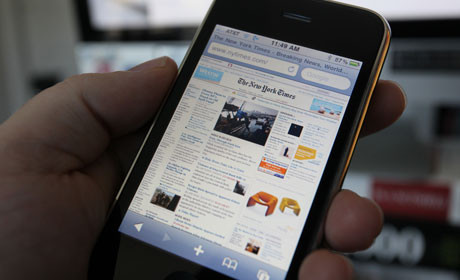
The report forecasts that by 2020, 80 per cent of all media will be consumed digitally
Credit: Image by Robert Scoble on Flickr. Some rights reserved.Smartphones have become "the first truly personal digital reading device" and every news publisher today should be designing "mobile strategies for the long term", global consulting firm McKinsey and Company told the News World Summit in Paris today.
McKinsey partner Eric Hazan revealed the findings of a wide-ranging report on how the evolution of digital technology is affecting news consumption, based on a survey conducted in 15 countries across North America, Europe and Asia at the end of 2011.
The report forecasts that by 2020, 80 per cent of all media will be consumed digitally - up from 50 per cent in 2007. Hazan told the conference: "Digital is the only ticket to the future - young generations are not coming back to paper."
Hazan said smartphones were becoming part of daily life in the developing world as well as developed countries, and was forecast to reach 90 per cent penetration in the US by 2015 - meaning a "mobile strategy is mandatory" now for media companies.
The report also revealed a significant increase in the amount of time people spent reading when they owned a tablet device or e-reader.
Tablet users are spending 25 per cent more time reading than someone with just a smartphone - and people with e-readers spend twice as long.
The study found willingness to pay for content - with 20 per cent of iPhone and 28 per cent of iPad users prepared to pay for material other than games and music on their device. It also found that social media had become a "gateway to content consumption" - with 35 per cent of people saying social media is the "starting point" for accessing content such as news.
McKinsey's research identified four areas of potential for growing an online business model: sponsored sections or content, lead generation, consumer paid content and digital video content.
Hazan said: "We need to adapt our business model for the web we have, not for the web we'd like to have."
He said publishers should be asking themselves: "Which part of our content could constitute sponsorable platforms? Which part of our audience love us enough to pay for our content? What is the authentic affordable and scalable video content model for our brand? In doing so, media companies could more than double their online revenue."
Free daily newsletter
If you like our news and feature articles, you can sign up to receive our free daily (Mon-Fri) email newsletter (mobile friendly).









